Recreation for all: public land accessibility in our Eastern States
The Expanding Public Lands Outdoor Recreation Experiences (EXPLORE) Act is designed to improve access to outdoor spaces for people with disabilities, veterans, and children, among others. In support of that law, over the next year we will explore accessible public lands, state by state, managed by the Bureau of Land Management on behalf of the American people.
BLM Eastern States manages hundreds of parcels of diverse public land totaling about 40,000 surface acres across 31 states east of and bordering the Mississippi River. We are also responsible for some 39 million acres of subsurface mineral estate in that region.
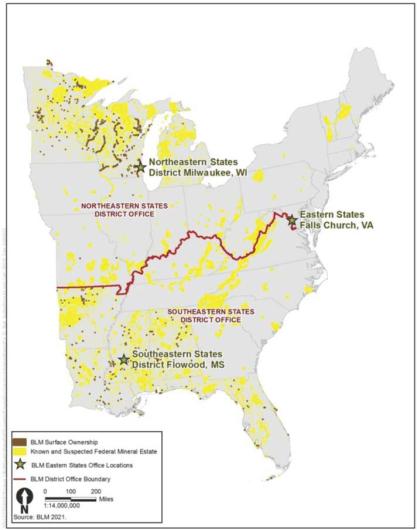
This month, we will discover public lands in Minnesota, Wisconsin, Alabama, Virginia, Maryland, and Florida that provide accessible recreation for people with physical, intellectual, or emotional disabilities. This includes scattered islands, accessible trails, important historic sites, and programs and activities for people with sensory sensitivities.
The diverse land the BLM manages includes 86 of the 365 islands in Lake Vermilion and smaller surrounding lakes in Minnesota, as well as nearly 500 islands in Wisconsin’s rivers and lakes (for example at Stevens Point and Portage). While these remote lands can only be reached by boat, they don’t yet provide accessible recreation for most visitors with limited mobility. However, visiting these islands could be good for your mental health.
In addition, the Northeastern States District manages two Special Recreation Management Areas —Meadowood in northern Virginia and Douglas Point on the other side of the Potomac River in Maryland. Both, just a short drive from Washington, D.C., are Important Bird Areas crossed by National Scenic and Historic Trails; they offer environmental education programs and multi-use trails, including a universally-accessible trail.
Meadowood Special Recreation Management Area
The Meadowood Special Recreation Management Area is 25 miles south of Washington, D.C., on the Mason Neck peninsula. As shown on the Meadowood Trail Map, this site is known for its miles and miles of equestrian, mountain biking, and hiking trails. While those trails were not developed with accessibility in mind for people with limited mobility, there is a 0.4-mile trail at Hidden Pond, off Belmont Boulevard, that is universally accessible.
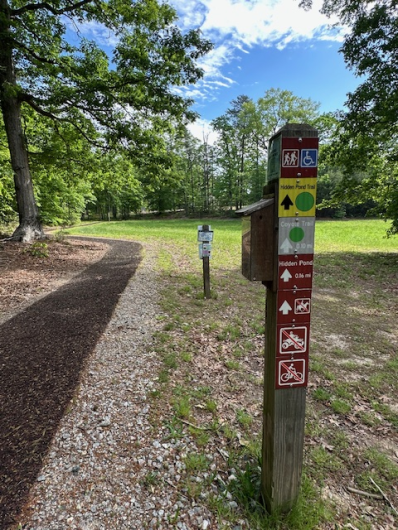
The Hidden Pond trail has a small, packed dirt parking lot at the beginning of the trail, which is made of a bonded rubber mulch to help reduce the risk of slips, falls, and injuries. An accessible wooden fishing dock with a bumper and wood bench overlooks the pond.
Some of the other trails, like Mustang Loop, have a natural surface that is fairly flat. Some visitors with limited mobility could visit or fish at Enchanted Pond, birdwatch, or go forest bathing. Forest bathing, known as “shinrin-yoku” in Japanese, is immersing yourself in nature, especially a forest, to experience the calming effects of connecting with the outdoors through all of your senses.
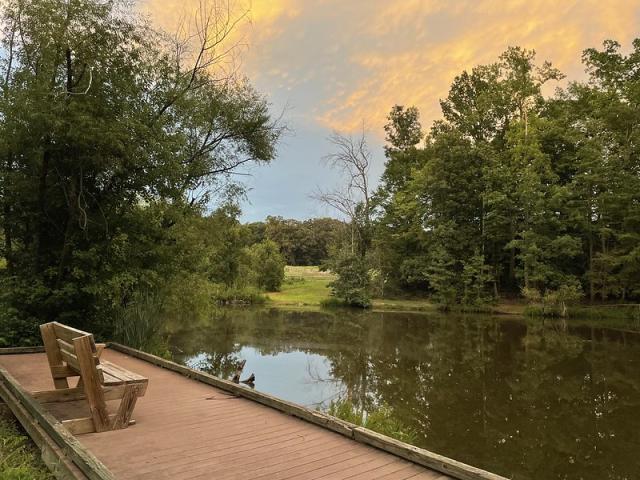
The BLM is currently exploring options to design and build a Sensory Nature Trail at Meadowood for people with neurodevelopmental, physical, and other disabilities, and available for all to enjoy. It was inspired by the Autism Nature Trail at Letchworth State Park in New York.
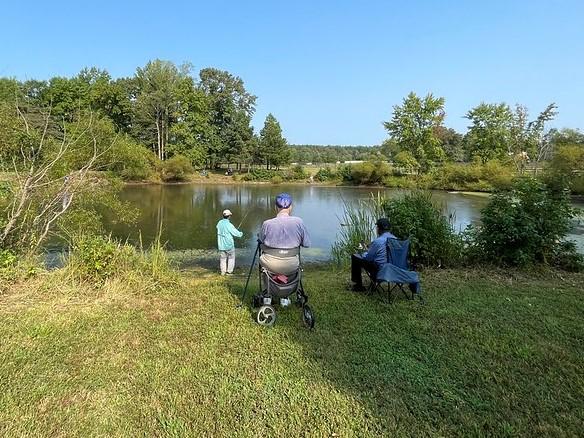
Douglas Point Special Recreation Management Area
Located on Maryland’s Nanjemoy peninsula, the Douglas Point Special Recreation Management Area is 44 miles south of Washington, D.C. The area is one of the last remaining undeveloped tracts along the Potomac River. Its long history of human occupation makes it culturally significant. Diverse habitats, including intact mature hardwood forest, freshwater marshes, and more than a mile of river shoreline, make Douglas Point an ecologically significant home for birds and other wildlife.
Download the Trail Map to see how to access the area, where to park, and where trails are. The South Trailhead parking lot is closest to the accessible Chiles Homesite Trail. You can take the trail one-third of a mile to the Chiles Homesite ruins and come back to the parking lot, or you can continue on the one-mile Cal Posey Trail to the North Trailhead parking lot. Although this trail is identified as “easy,” it was not built for wheelchair accessibility. These trails are part of the Potomac Heritage National Scenic Trail, and allow hiking, mountain biking, and equestrian use.
A detailed description of the site’s accessibility features, along with a link to photos of the features can be found on the Douglas Point visit page.
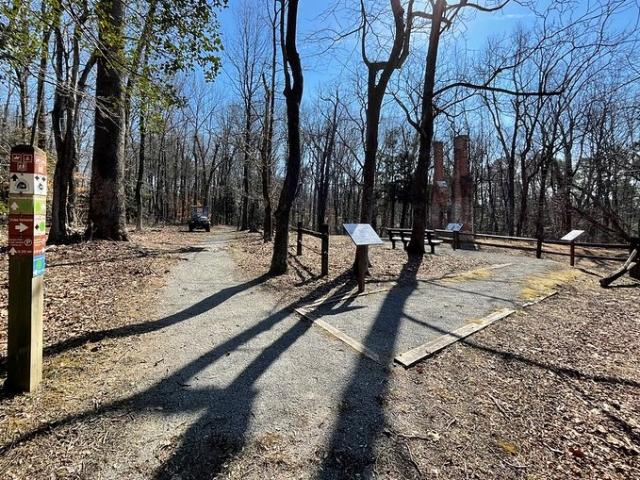
The BLM Southeastern States District stewards lands and resources in 11 southeastern states, including beach and riverside tracts along the Alabama Gulf Coast and the Jupiter Inlet Lighthouse Outstanding Natural Area in Florida. At Jupiter Inlet, the BLM partners with the Loxahatchee River Historical Society, which operates the historic lighthouse that dates back to 1860, along with a museum.
Jupiter Inlet Lighthouse Outstanding Natural Area
The Jupiter Inlet Lighthouse site contains 120 acres of diverse ecosystems and historical significance. The inlet connects Indian River Lagoon and Loxahatchee River to the Atlantic Ocean. It has provided vital passage for transportation and commerce since the earliest days of the region.
Dispersed-Use Area. Trails, a boardwalk, and a scenic overlook are found in the dispersed-use area, north of the busy Historic Corridor and Lighthouse. Although trails near the south parking lot are too rough for a typical wheelchair, this is where the two virtual Agents of Discovery Missions are located. These “secret missions” encourage children and people with developmental disabilities to get outside and solve nature-related mysteries. Download the app from the previous link to see the location-based missions.
The north parking lot of the dispersed-use area is next to a two-mile loop trail. The first half mile is wheelchair accessible. It starts as a concrete path that goes through a mosaic of thick native vegetation and bright white sand. After a quarter mile, the concrete gives way to a boardwalk and covered scenic overlook, where visitors can see sea grapes, a dense mangrove forest below, and a glimpse of the Indian River Lagoon. The rest of the two-mile loop is a bark-chip pathway, which, combined with the sand, might be challenging for people with limited mobility.
Historic Corridor. Most visitors come to this area to see the Lighthouse. An accessible brick and concrete path leads you through the Historic Corridor, past several historic buildings and interpretive signs, to the museum and lighthouse. A few of the buildings along the pathway are accessible, including some used by pioneers and lighthouse keepers.
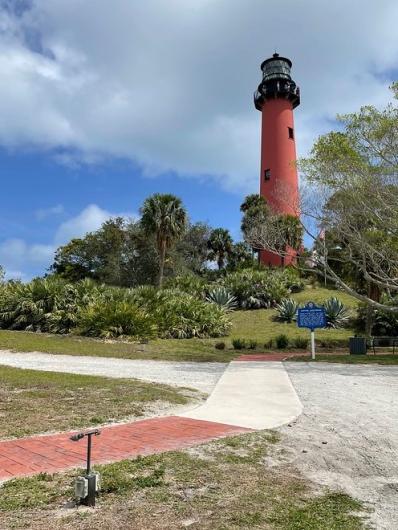
Lighthouse. Visitors can climb the lighthouse steps during guided tours only. If climbing 105 steps doesn’t sound fun, then you can download the “Jupiter Lighthouse Tours” app on your phone to tour the lighthouse and grounds virtually and learn about its history. A general tour and a “kids tour” are available. Both are 30 minutes long. Virtual tours can also help neurodivergent guests who appreciate knowing what to expect before visiting a new place. The Jupiter Inlet Lighthouse and Museum website has more information.
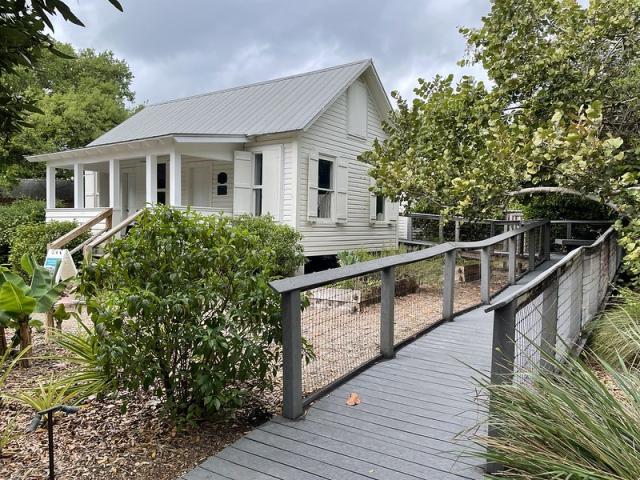
Activities. A variety of activities are available in and around the Jupiter Inlet Lighthouse, as shown on the Calendar. Friends groups, partners, or permittees conduct many of these activities, which are often appropriate for visitors with disabilities.
Children and adults with developmental disabilities can participate in a lighthouse story time to learn about lighthouse keepers, turtles, manatees, and other related topics. Refer to the tours & programs page for links to story time videos or check the calendar for onsite story time.
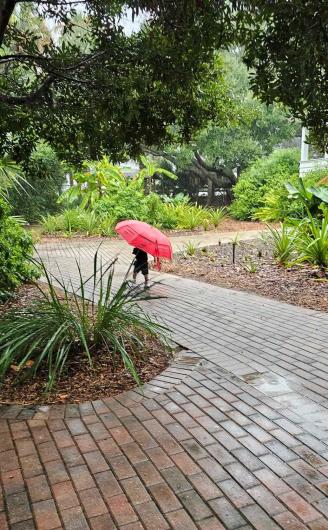
The lighthouse and museum sponsors monthly sensory sensitive mornings for people on the autism spectrum or with sensory sensitivities. Different activities are featured each month. Quiet spaces are provided for those who need it. Families who are able can climb the lighthouse steps during the sensory sensitive mornings before the site is open to the public.
Another opportunity here is the sound bath experience, held monthly on Tuesday evenings from late fall to spring, weather permitting. Musicians Robin Lance and Debbie Tassone guide you to relax with the sounds of the season as you bathe in healing vibrations of crystal bowls, Himalayan sound bowls, chimes, and harmonic vocals. This event takes place near the base of the lighthouse under the Ficus tree, planted in 1935 in honor of the former lighthouse keepers and their families. Check the calendar and the tours & programs page for more information on this and other events.
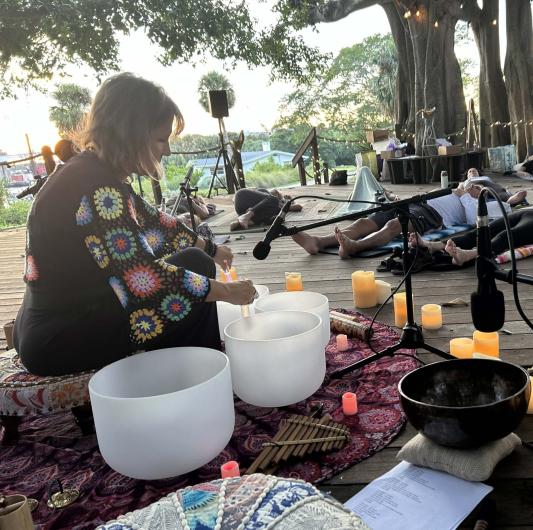
These are just a few of the amazing activities and areas the BLM manages in Eastern States. The BLM is dedicated to ensuring that everyone has an equitable opportunity to enjoy public lands by providing access to facilities, programs, services, and activities for people with disabilities. The BLM accessibility program provides details on opportunities, resources, laws, policies, and guidelines.
Useful Links
EXPLORE Act – to improve recreation opportunities on, and facilitate greater access to, Federal public land.
Access pass – free lifetime pass for U.S. citizens or permanent residents with permanent disabilities.
Military lifetime pass – free pass for Gold Star Families and Veterans.
Every kid outdoors – free pass for fourth graders and their families.
Cathy Humphrey, Experienced Services Program
Related Stories
- Inspiring Future Land Stewards Through STEAM
- Using science to uncover mysteries of the Mesa archaeological site in Alaska
- Lake Havasu Fisheries Improvement Program is the gift that keeps giving
- Historic Umtanum Suspension Bridge wins international footbridge award
- BLM is thankful for public lands volunteers
Office
5275 Leesburg Pike
Falls Church, VA 22041
United States
